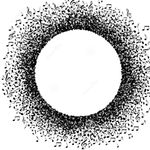- JMP will suspend normal business operations for our Winter Holiday beginning on Wednesday, Dec. 24, 2025, at 5:00 p.m. ET (2:00 p.m. ET for JMP Accounts Receivable).
Regular business hours will resume at 9:00 a.m. EST on Friday, Jan. 2, 2026. - We’re retiring the File Exchange at the end of this year. The JMP Marketplace is now your destination for add-ins and extensions.
- Subscribe to RSS Feed
- Mark Topic as New
- Mark Topic as Read
- Float this Topic for Current User
- Bookmark
- Subscribe
- Mute
- Printer Friendly Page
Discussions
Solve problems, and share tips and tricks with other JMP users.- JMP User Community
- :
- Discussions
- :
- Sample Size Calculation
- Mark as New
- Bookmark
- Subscribe
- Mute
- Subscribe to RSS Feed
- Get Direct Link
- Report Inappropriate Content
Sample Size Calculation
My current process is operating at a 0.01 defect frequency (e.g., 3 defects in last 300 units inspected). If I make a process change that could potentially increase the defect frequency, how many units will need to be inspected post-change to determine if a statistically significant difference in defect frequency?
Accepted Solutions
- Mark as New
- Bookmark
- Subscribe
- Mute
- Subscribe to RSS Feed
- Get Direct Link
- Report Inappropriate Content
Re: Sample Size Calculation
Mark:
Here is a good formula for the AQL sample size and the RQL sample size The sample size, 947 or 948 is shown.
I would have sent you the JMP table but don't know how to post it here
- Mark as New
- Bookmark
- Subscribe
- Mute
- Subscribe to RSS Feed
- Get Direct Link
- Report Inappropriate Content
Re: Sample Size Calculation
Mark:
With the current process at 1% defective you have to set a upper defective limit say 2%. Also, the risks have to be assigned, typically 10% for type I & II errors
The sample size is than the sample size and defect value which will accept a 1% or lower defect level 90% of the time while rejecting the product when the relect level is 2% or higher 90% of the time.
An OC curve is the best way to visualize the results
- Mark as New
- Bookmark
- Subscribe
- Mute
- Subscribe to RSS Feed
- Get Direct Link
- Report Inappropriate Content
Re: Sample Size Calculation
You will also need to articulate 'delta'...or what is the minimum defect rate improvement that you are trying to detect.
- Mark as New
- Bookmark
- Subscribe
- Mute
- Subscribe to RSS Feed
- Get Direct Link
- Report Inappropriate Content
Re: Sample Size Calculation
Mark:
My Excel based calculation says a sample of 948. If there are 13 or less defects, accept that there is no process shift, greater than 13 defects a shift has occurred, given the risks specified.
- Mark as New
- Bookmark
- Subscribe
- Mute
- Subscribe to RSS Feed
- Get Direct Link
- Report Inappropriate Content
Re: Sample Size Calculation
Hi,
Can you please send the table as attached file.
Thanks
- Mark as New
- Bookmark
- Subscribe
- Mute
- Subscribe to RSS Feed
- Get Direct Link
- Report Inappropriate Content
Re: Sample Size Calculation
I suggest you use a Runs Chart and/or Process Behavior Chart (Control Chart), With this type of "rare event" data, both work well. Use "good units inspected between defective units" as your test variable. When you make your process change, you will be able to detect a shift in performance, if there is one. See my article in Quality Digest regarding OSHA Recordable Injuries (same type of data)...http://www.qualitydigest.com/inside/quality-insider-article/alleviating-tortured-data.html
- Mark as New
- Bookmark
- Subscribe
- Mute
- Subscribe to RSS Feed
- Get Direct Link
- Report Inappropriate Content
Re: Sample Size Calculation
Mark:
Here is a good formula for the AQL sample size and the RQL sample size The sample size, 947 or 948 is shown.
I would have sent you the JMP table but don't know how to post it here
- Mark as New
- Bookmark
- Subscribe
- Mute
- Subscribe to RSS Feed
- Get Direct Link
- Report Inappropriate Content
Re: Sample Size Calculation
FYI (and regarding 'but don't know how to post it here') - If you use the 'Advanced Editor':
there's an 'Attach' link at the bottom right.
- Mark as New
- Bookmark
- Subscribe
- Mute
- Subscribe to RSS Feed
- Get Direct Link
- Report Inappropriate Content
Re: Sample Size Calculation
Thanks for the tip ! !
- Mark as New
- Bookmark
- Subscribe
- Mute
- Subscribe to RSS Feed
- Get Direct Link
- Report Inappropriate Content
Re: Sample Size Calculation
I am having trouble with this formula for low rejection rates, e.g. AQL 0.1% RQL 0.25% . Any ideas? Curious about the use of Chi sqaure quartile vs binomial, etc
@vinkane wrote:Mark:
Here is a good formula for the AQL sample size and the RQL sample size The sample size, 947 or 948 is shown.
I would have sent you the JMP table but don't know how to post it here
Recommended Articles
- © 2025 JMP Statistical Discovery LLC. All Rights Reserved.
- Terms of Use
- Privacy Statement
- Contact Us









